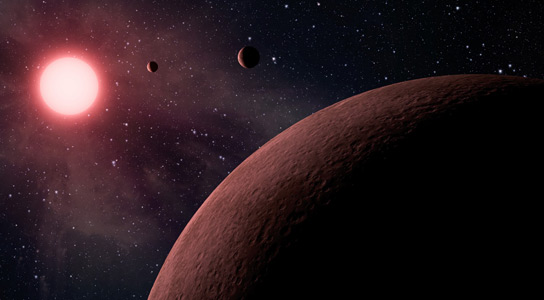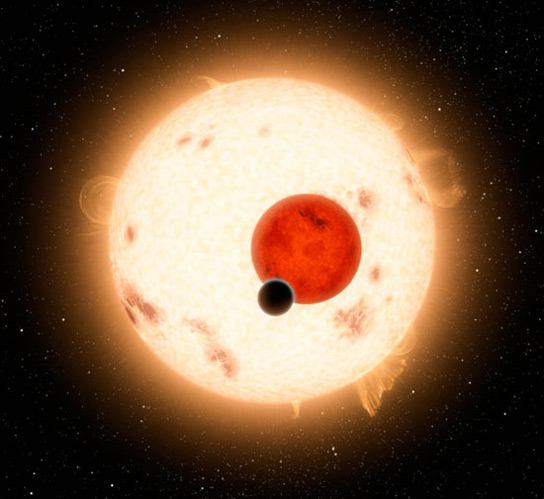
Astronomers have discovered that two exoplanets are overlapping in the skies as they cross their star. The phenomenon is new enough that it doesn’t have a name, but it’s related to a syzygy, which is when a straight line configuration of three celestial bodies is formed in a gravitational system.
Astronomers used data from the Kepler Space Telescope to probe KOI-94, a star seemingly orbited by four planets. A planet transiting in front of the star causes the light to momentarily dim, which is how Kepler finds exoplanets. Two planets transiting at the same time dim the light even more, but if they overlap there is a momentary increase in brightness as the planets cover less of the star.

Image via NMSU
The scientists published their findings in a preprint available on arXiv. Teruyuki Hirano, of the University of Tokyo, Japan, et al. saw this pattern in one planet candidate, KOI-94.03. The innermost candidate, KOI-94.01 passed between the two. This could also be explained by a single planet passing in front of the dark starspot.
This uncertainty hasn’t stopped astronomers from speculating what to call the event. Hirano favors planet-planet-eclipse, but double transit has also been mentioned as has overlapping double transit. Exosyzygy or planetary syzygy are also strong candidates.
Finding more than two planets lining up is believed to be extremely unlikely.
[via New Scientist]








 User Center
User Center My Training Class
My Training Class Feedback
Feedback












Comments
Something to say?
Log in or Sign up for free